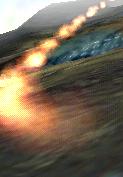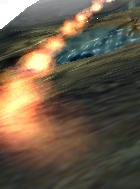
 |

|
| ActiveWin: Reviews | Active Network | New Reviews | Old Reviews | Interviews |Mailing List | Forums |
|
|
|
|
|
DirectX |
|
ActiveMac |
|
Downloads |
|
Forums |
|
Interviews |
|
News |
|
MS Games & Hardware |
|
Reviews |
|
Support Center |
|
Windows 2000 |
|
Windows Me |
|
Windows Server 2003 |
|
Windows Vista |
|
Windows XP |
|
|
|
|
|
|
|
News Centers |
|
Windows/Microsoft |
|
DVD |
|
Apple/Mac |
|
Xbox |
|
News Search |
|
|
|
|
|
|
|
ActiveXBox |
|
Xbox News |
|
Box Shots |
|
Inside The Xbox |
|
Released Titles |
|
Announced Titles |
|
Screenshots/Videos |
|
History Of The Xbox |
|
Links |
|
Forum |
|
FAQ |
|
|
|
|
|
|
|
Windows XP |
|
Introduction |
|
System Requirements |
|
Home Features |
|
Pro Features |
|
Upgrade Checklists |
|
History |
|
FAQ |
|
Links |
|
TopTechTips |
|
|
|
|
|
|
|
FAQ's |
|
Windows Vista |
|
Windows 98/98 SE |
|
Windows 2000 |
|
Windows Me |
|
Windows Server 2002 |
|
Windows "Whistler" XP |
|
Windows CE |
|
Internet Explorer 6 |
|
Internet Explorer 5 |
|
Xbox |
|
Xbox 360 |
|
DirectX |
|
DVD's |
|
|
|
|
|
|
|
TopTechTips |
|
Registry Tips |
|
Windows 95/98 |
|
Windows 2000 |
|
Internet Explorer 5 |
|
Program Tips |
|
Easter Eggs |
|
Hardware |
|
DVD |
|
|
|
|
|
|
|
ActiveDVD |
|
DVD News |
|
DVD Forum |
|
Glossary |
|
Tips |
|
Articles |
|
Reviews |
|
News Archive |
|
Links |
|
Drivers |
|
|
|
|
|
|
|
Latest Reviews |
|
Xbox/Games |
|
Fallout 3 |
|
|
|
Applications |
|
Windows Server 2008 R2 |
|
Windows 7 |
|
|
|
Hardware |
|
iPod Touch 32GB |
|
|
|
|
|
|
|
Latest Interviews |
|
Steve Ballmer |
|
Jim Allchin |
|
|
|
|
|
|
|
Site News/Info |
|
About This Site |
|
Affiliates |
|
Contact Us |
|
Default Home Page |
|
Link To Us |
|
Links |
|
News Archive |
|
Site Search |
|
Awards |
|
|
|
|
|
|
|
Credits |
|
|
Product:
Matrox Millennium G450
Company: Matrox
Website: http://www.matrox.com
Estimated Street Price: $149
Review By: Julien JAY
2D
|
Table Of Contents |
As usual the Matrox Millennium G450 honors the Matrox reputation by providing great and sharp looking 2D graphics. This is thanks to a combination of numerous on card features such as the excellent chipset, a fast RAMDAC, and the 256-bit dual bus architecture. Everything on our monitor was coming out clear and vibrant, which is a lot more than I can say for a number of other Graphics cards. You can measure the high 2D quality and the speed of the video acceleration when using professional software like Adobe InDesign 1.5 or Adobe PhotoShop 5.5. When you use it you'll really notice a clear improvement comparing to any previous boards you may have.
VCQ2
Matrox's color rendering technique, called VCQ2, is one of the main reasons why Matrox has such high image quality. It is a technique created and used only by Matrox to display high-quality images. VCQ2 calculates the entire rendering with 32-bit precision internally. What this does is give much better image quality over 16-bit rendering, due largely to the much larger color palette. 32-bit color allows for better color blending, resulting in smoother color gradients and transition (Not without a slight performance hit mind you) Because all of the rendering is performed internally at 32-bit, all lighting and blending processes are also done with 32-bit precision, resulting in no color banding or annoying artifacts. So, if you are running your display in 32-bit, you get a great picture quality.


32-Bit
Z-Buffering
Although a 3D scene is
basically a 2D mockup of 3D, the 2D image that is eventually generated needs to
know which object in the 3D scene is in front of another object. This
information is stored by means of a Z (depth) buffer. People have noticed that
games such as Half Life, Quake 2/3 show improvement when using a 32-bit Z-buffer
as distant objects don't suddenly 'pop' into view (an artifact of a low
resolution Z-buffer). Flight Simulations for example rely on depth of scene and
really benefit from a 32-bit Z-buffer. Games such as those are where you would
gain most benefit. But as usual, there is a slight performance loss with this
feature but if you want the best quality image then I recommend that you try it,
as the loss in performance is particularly small.
*32-bit z-buffer will
only enhance a game that is programmed to take advantage of this effect. There
are only a handful of titles out that currently take advantage of a 32-bit
z-buffer.
The Matrox G450 series
continues the G400 hardware support for Microsoft's DirectX - Environment-Mapped
Bump Mapping. Environment Mapped Bump Mapping is a DirectX 7 quality feature,
which will be used to substantially increase the visual realism of 3D scenes. In
fact, 3D graphics hardware that supports this feature will be able to render 3D
scenes with more realism than was ever before possible on the PC. Environment
Mapped Bump Mapping is essentially a technique that allows a much higher level
of detail to be added to a 3D world than could be possible with texture- mapped
polygons alone. Fine details such as the pock- marked surface of bricks in a
dungeon and scratches on robots and tanks can be added with ease. Special
effects such as realistic water surfaces, heat shimmering off hot asphalt on a
summer day and air turbulence in flight simulators can also be uniquely
accomplished by using Environment Mapped Bump Mapping. This new feature will
prove to be as revolutionary as alpha blending in terms of the creative effects
that game developers will accomplish when given free rein. A lot of games now
support this brand new technology. If the G450 card includes great 3D features
it doesnít come with a Transform & Lighting engine like 3D gamers like. However
as we said before this card isnít intended to be used by hard core gamers.
Environment-Mapped Bump Mapping
The Environment Bump Mapping feature that made the success of the G400 card is included into the G450 chip. There is no doubt that Environment-Mapped Bump Mapping is great to look at. But yet again there is a performance hit whenever you use it - but if you are into image quality instead of frame rates like I am, you'll love it.


DVD Playback
DVD is becoming a very
important medium in the world of computers. The amount of space on one DVD is so
large that it just can't be ignored. Most graphic cards offer some sort of
DVD-Video playback, such as the ATI Radeon, which does a lot of the decoding in
hardware. The Millennium G450 is no exception, but it doesn't use hardware
decoding just software in the form of the

![]()
Tests
Obviously as we
said this 3D card isnít able to compete with

As you can see
both cards (G400 and G450) are very near in terms of performance especially when
using Direct 3D.
| <-- Drivers & DualHead | Conclusion --> |

